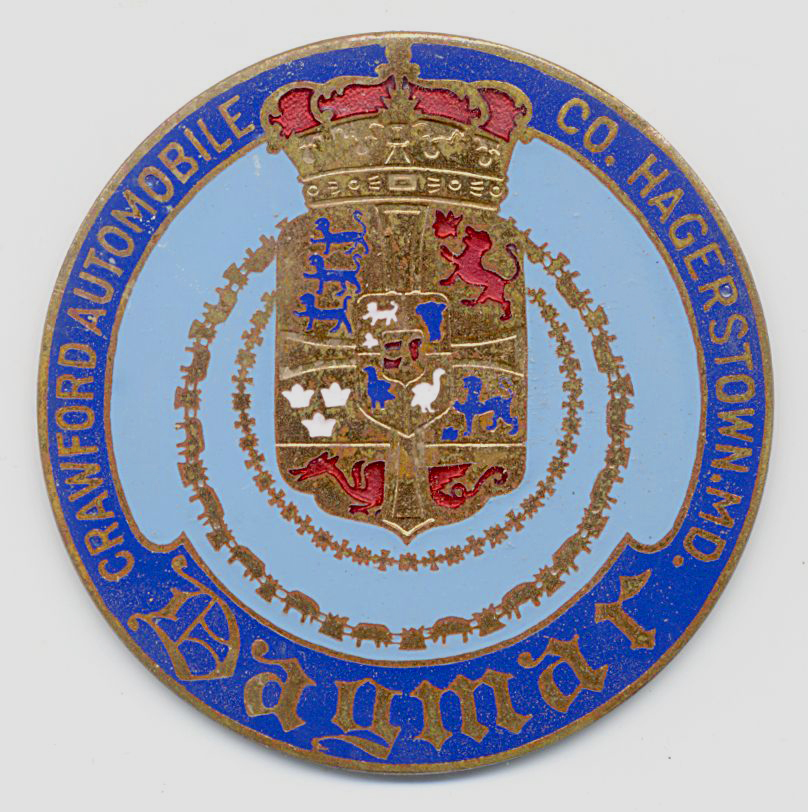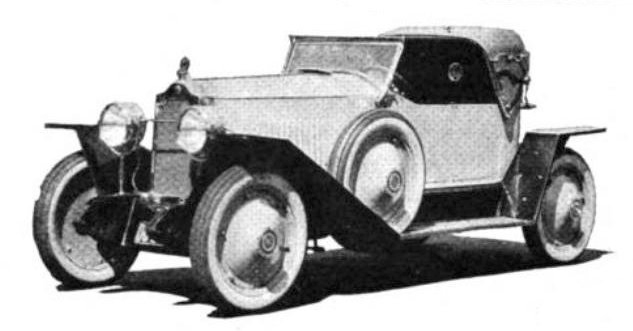The DAGMA Auto
Geoff Wheatley

Cars have been produced in America for over a hundred years, even longer in Europe. I have always been interested in the early manufacturers who in reality were the people who developed the unique horseless carriage. We all know the name Ford or Benz...Buick or Pierce Arrow etc., but there were other manufacturers who threw their hat (or rather their money).into the vehicle production ring with some success.
Limited of course compared with Ford or Morris but worthy of comment. I have already reviewed Franklin the most successful air cooled car until the VW came along, that lasted thirty three years also the interesting range of Steamers which were very much an American adaptation of successful steam power for road vehicles. The vast majority of these early products had a limited life span the best perhaps ten to fifteen years, however some went out of business in a matter of two or three years, others in as many months.
As I have indicated I have always been interested in these early so-called men of vision who threw their life savings and yours or mine if they could get the chance, into the idea of a better horseless carriage. In the US alone records indicate that over 80% of such investments went down the drain and we are not simply talking about individual investors. Various banks believing that every engineer could be another Ford loaned considerable amounts of money to these enterprises and were left with useless notes of credit and unhappy shareholders.
For those who did succeed and build a market for their product their success was usually the result of development , both in terms of safety, comfort and performance. Value for you money was another feature to keep you in business as fully illustrated by Ford who produced the same car for eighteen years in the same color! But that was Ford who never attempted to move into the luxury market until he acquired the Lincoln Motor Company when it went bankrupt in 1922.
In company with many others who were directly affected by the 1919/1922 WWI post war slump which was universal . His timing was good as a couple of years later the situation completely changed and a financial boom period that existed for six years took its place until the Wall Street Collapse in 1929. Needless to say this sorted out many of the vehicle manufacturers that had survived the earlier slump; by 1931 the industry was again in serious trouble both in America and throughout the industrial world. The order of the day was inexpensive transport illustrated by the Ford Model A with a on the road price of $450 and now with the feature of any color you wish to chose from a authorized factory color chart. (In my research a few years ago I found that the famous Tin Lizzie that featured a unique pedal-controlled transmission created some concern in certain states in the country. The end result being that if you drove Lizzie you required a separate driving license.
Returning to my original theme, out of almost a thousand US car manufactures listed in 1914, by 1930 the list was down to under a hundred and not many of them survived ten years later.
Crawford Automobile Dagmar radiator emblem
Image Credit: Photo Courtesy of: Wikimedia
via Commons Licensed under Public Domain

An interesting example of this situation was the Crawford Automobile Company based in Hagerstown Maryland. Created in 1905 it struggled for the next twenty years with annual production figures ranging from two cars, to a zenith of two hundred and eighty.
In 1922 when the real effects of the industrial slump was felt George Crawford the owner and founder of the company sold his controlling interest to a successful local businessman, Matthias Moller who originally came from Denmark.
He was very active in Hagerstown, owning an organ factory, a hotel and other various enterprises. He had a young daughter named Dagmar who was certainly very special to her father as illustrated by the fact that when he opened his new hotel it was named the Dagmar Hotel. He was determined to get the Crawford Motor Company back on its feet and being the controlling share holder he could do whatever he felt necessary to achieve this objective.
Unlike Ford he believed that the look and style of an automobile was the most important selling feature so with the help of a European design team the company produced a very attractive sports version that was exhibited at a New York Motor Show in the summer of 1922... Its name? ..You guessed it...DAGMA.
Dagmar 1923
Image Credit: Photo Courtesy of: Wikimedia
via Commons Licensed under Public Domain

It was the success of the year, Orders came in from all over the country and plans were made to open another factory to meet the demand. The name Crawford Auto was changed to Dagma Auto which seemed to increase the demand. Style coupled with good engineering continued to serve the company with sales increasing every year. Various versions of the original were produced and proved to be successful until the national financial situation changed in 1928 and eventually collapsed a year later.
The demand for sporty luxury vehicles almost vanished especially when the purchase price was three times the average annual income of those who were fortunate enough to have a job. Moller continued to keep the factory going for another three years mainly because his other business interests enabled him to stop the company going under but as the economy of the day continued to decline the company closed its doors in 1937.
I have only seen pictures of the DAGMAA so I can’t comment on the actual product however media reports of the time supported the idea that this was a totally unique car. A motor correspondent ended his review with the statement that; "Once you have seen the car you will remember it for the rest of your life". Of course you can intemperate that statement any way you chose as I have seen certain vehicles that I remember, but not always for the better.
Geoff Wheatley

BACK TO TOP